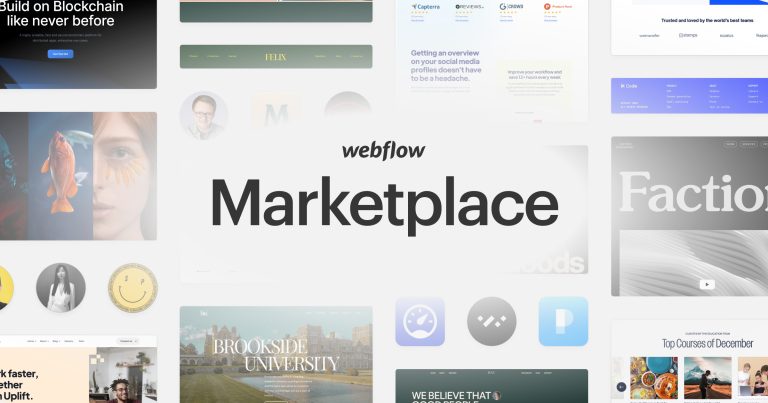Shopify Flow: Everything you need to know and How to Use It
With its powerful automation features, Shopify Flow, unique software for Shopify Plus subscribers, has retailers excited. It enables retailers to quickly automate selling procedures from the backend, increasing efficiency and enabling them to concentrate on other duties.
What Is Shopify Flow?
Shopify Flow is an e-commerce automation platform that enables you to automate tasks and processes within your store and across your apps.
Even newbies with no coding or development skills can still use it easily. Additionally, it is displayed in a simple and user-friendly manner, enabling the development of automated processes straightforward.
Businesses should be able to create unique processes with only a few clicks by utilizing the trigger, condition, and action logic-based three-step visual builder. A Shopify Expert can alter the automatic workflows within your browser, or you can choose from pre-made layouts.
How Does Shopify Flow Work?
The first thing to keep in mind is that you must be subscribed to the Shopify Plus Plan in order to use Shopify Flow. With Shopify Plus, you can automate any process with ease for as little as $2000 per month.
Tracking email campaign
Shopify One of Flow’s most notable features is the capability to tag customers. Particularly as a business owner, you may categorize clients based on how much money they spend, creating the potential for future marketing. Flow also interacts with many email marketing solutions because it uses UTM codes as attributes. You may monitor customers who have made significant purchases from your business using a tagging system and retain them for upcoming sales.
You must first make a trigger. The App displays a list of potential triggers on the right when you click a button. In this example, we’ll utilize the “order created” trigger.
The next step is to create a rule for each trigger. There are particular prerequisites for this example. One of the choices is “Customer order quantity – higher than/equal to – 5”.
The next step is to “add an order card.” A tag box will pop up on the right where you can type the tag’s name.
 Finally, choose “send HTTP request” to conduct another action that will transmit the customer’s data to an outside source (in this hypothetical case, an email marketing platform). Ideally, you can use this information to offer discounts and offers to customers who have responded positively to your email campaign.
Finally, choose “send HTTP request” to conduct another action that will transmit the customer’s data to an outside source (in this hypothetical case, an email marketing platform). Ideally, you can use this information to offer discounts and offers to customers who have responded positively to your email campaign.
Creating urgency for low-inventory items
With Shopify Flow, tracking inventory changes is simple. Additionally, you may immediately add low-stock products to your “Last Chance” collection (or whatever name your heart wishes) as product inventories run short. To alert clients that they only have a limited window of opportunity to act, you may also identify it as “low stock.”
- Step 1: Choose “inventory quantity changed” as your trigger.
- Step 2: Create and save a condition, such as “total product inventory – less than -5.” (quantity will vary to what you consider low in stock). From here, you will add the “add the product to collections” action.
- Step 3: Select the Last Chance collection to which you want to add the item. You can also tag it as “low-in-stock” because you can add multiple actions and utilize that tag to appear on the shop’s front end.
 Checking and acting on fraudulent orders
Checking and acting on fraudulent orders

Detecting fraudulent orders will always be the top priority of any e-commerce website. Shopify Flow enables store owners to set up actions connected to possibly fraudulent orders while Shopify notifies them about them.
Here’s how to set up your system to look for orders that could be fraudulent.
- Step 1: Select the trigger value.
- Step 2: Set a condition.
- Step 3: it will be helpful if you take some action. You’ll want to email your fraud team to notify them that a high-risk order has been detected.
The ability to review orders that aren’t classified as “high risk” but are still in your sights as a seller is another feature of Shopify Flow. If the shipping address and the billing address for the order are different. You can use Shopify Flow to notify the customer support team that an order needs to be reviewed before payment is received.
Why should you use Shopify Flow?
Shopify Flow’s purpose is to make it easier for you, the business owner, to focus on delivering quality to your customers rather than wasting time on routine tasks. Sellers can automate almost any business procedure.
Create a trigger

One of the most typical processes is to cancel and reload high-risk orders, which is recommended for novice sellers. This procedure automatically cancels high-risk orders, replaces inventory, and notifies consumers through email. You won’t need any additional software.
Choose “Create workflow from template” to get started. This will lead you to a new page where you may edit the process’s specifics, add tags, activate or disable the process, and update the process. Be cautious while adding extra conditions to it.
Easily manage your business
One of the most obvious advantages of Shopify Flow is saving organizations time. The following are some of the most popular Shopify Flow applications:
- Stock control
- Promotion campaigns
- Customers
- Orders
- Products
Multiple conditions and actions can be set
Your store can manage tasks and processes on its own with small staff and orders. You can use multiple conditional statements to be very particular about what you want automated.
Eliminate human error

Some behind-the-scenes procedures and touchpoints for every online transaction a customer makes must be completed before the transaction reaches the customer’s door. No matter how thorough we are, there will inevitably be human error in every work that is done by hand. Use Flow to do it rather than leave it to minor but crucial activities. You can complete tasks, such as temporarily hiding pages when products are out of stock, in real time without anyone. Most importantly, traders can safely carry out other normal activities.
Conclusion
You may keep track of reviews and respond to particular unfavorable ones using Shopify Flow. Shopify may be used for successful marketing, client retention, loyalty programs, and the ability to run specials and discounts on particular orders. When applied properly, automation may boost your business’s revenue and client retention. Additionally, you’ll learn more about your customers, which will make it simpler to promote to new clients.
Our company – Onextdigital takes great pride in providing the latest technology, the best solutions, and great prices. Whenever you need assistance, we’ll be there in time. All you need to do is click on the Onextdigital website and contact us!
>> Read more
Shopify Compare At Price And How To Set A Compare At Price For A Product On Shopify




